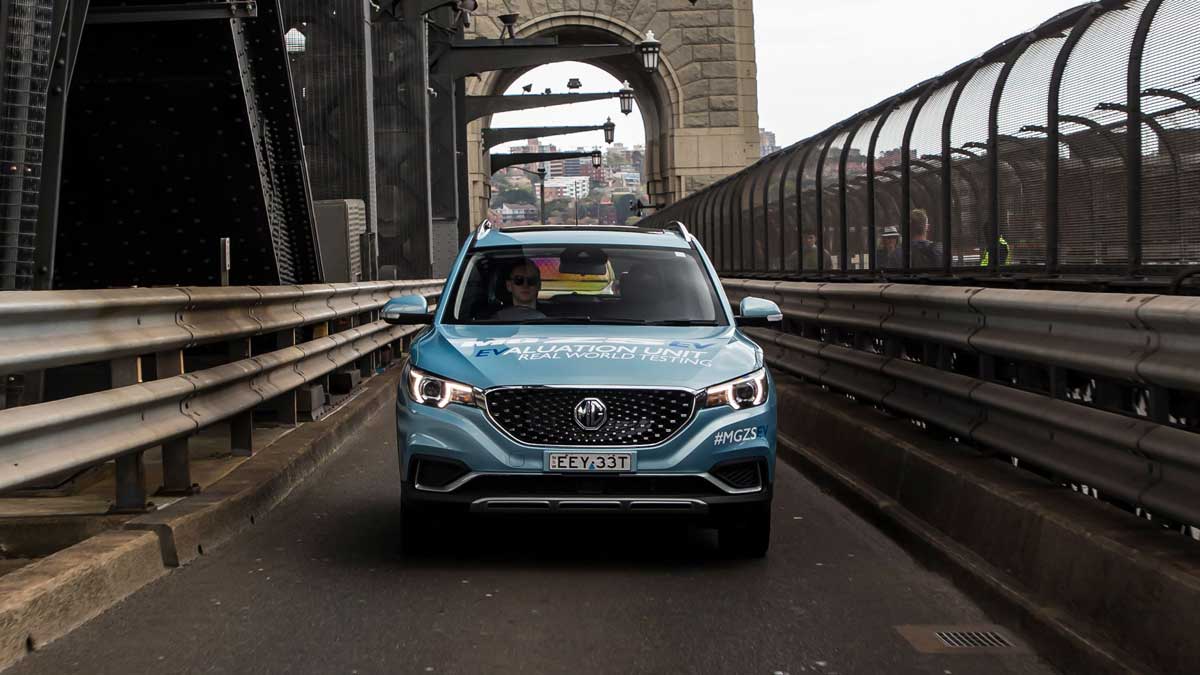Electric car sales doubled in Australia in the first quarter of 2021, signalling the growing interest of drivers in clean transport options.
And now the numbers are in: two new players at either pricing extremity of the local EV market, plus of course EV pioneer Tesla, are leading the surge in EV sales.
At one end is the MG ZS EV which sells for $40,990 before on-road costs and is the most affordable new electric car on Australian roads. MG has confirmed with The Driven that it sold 359 units from January to March, placing it second on the EV leaderboard in the first quarter of 2021.

To put that in context, in March 2020 second place was held by Hyundai, which had then sold 140 Kona Electrics and 116 all-electric Ioniqs combined (the latter of which had shared its takings with its plug-in hybrid and hybrid stablemates but which attracted extra drivers with smaller pockets).
At that stage, the Ioniq was one of the cheapest EVs on the market, sharing that title with the Nissan Leaf (which sold 118 in Q1 2020) at just under $50,000. Hyundai has also now released its 2021 refreshed Kona EV, so time will tell if that renews interest for those after a long-range electric compact SUV.
At the other end of the current market is the Porsche Taycan. Porsche sold 161 Taycan units in March and 225 in the first quarter according to Vfacts, a mind-boggling number when you consider the base model starts from $191,000 before on-road costs and it only hit the road in late February.
That puts it at number three on the leaderboard, although whether it will keep up that pace may depend on availability. While a Porsche salesperson told us customers should expect to wait until the last quarter of 2021 for new orders, actual timings will depend on colours, trim, options chosen and if floor stock becomes available for sale.
Number one – surprise, surprise – is Tesla. Although Tesla does not report local sales numbers, a reliable source tells us around 2,200 have been imported in the first quarter. We’ve attributed the majority of these to the Model 3 although there would be a smattering of Model S and Model X sales in there also.

This means Tesla sales are estimated to have doubled since the first quarter of 2020, and that along with the Taycan and ZS EV, EV sales have doubled across the board.
This in itself is not surprising, given the surging interest in stories on this website (more than 1.3 million page views in March alone), and in what is thought to be the largest deliberative engagement program (a tool used to provide elected representatives with well-informed advice on complex issues, Bryce Gaton explains) conducted to date on the EV transition.
It showed that the overwhelming majority of Victorians surveyed said they want electric vehicles and more importantly, they want internal combustion engine vehicles banned by 2030.
The problem is that EVs are still unaffordable for the majority of Australians, unlike overseas where they are actively supported by government policies and subsidies. This has seen EV market share balloon as high as nearly 70% in late 2020 auto sales in Norway, where policies have been in place for three decades.
The upshot of the Victorian survey is that government should be doing more to encourage EVs, including introducing emissions standards, electrifying government fleets, rolling out more charging infrastructure and introducing incentives instead of taxing adopters of clean technology.
A doubling of sales is nice. But with EV sales still sitting at just 1% in Australia, there is still much more to be done.

Bridie Schmidt is associate editor for The Driven, sister site of Renew Economy. She has been writing about electric vehicles since 2018, and has a keen interest in the role that zero-emissions transport has to play in sustainability. She has participated in podcasts such as Download This Show with Marc Fennell and Shirtloads of Science with Karl Kruszelnicki and is co-organiser of the Northern Rivers Electric Vehicle Forum. Bridie also owns a Tesla Model Y and has it available for hire on evee.com.au.


